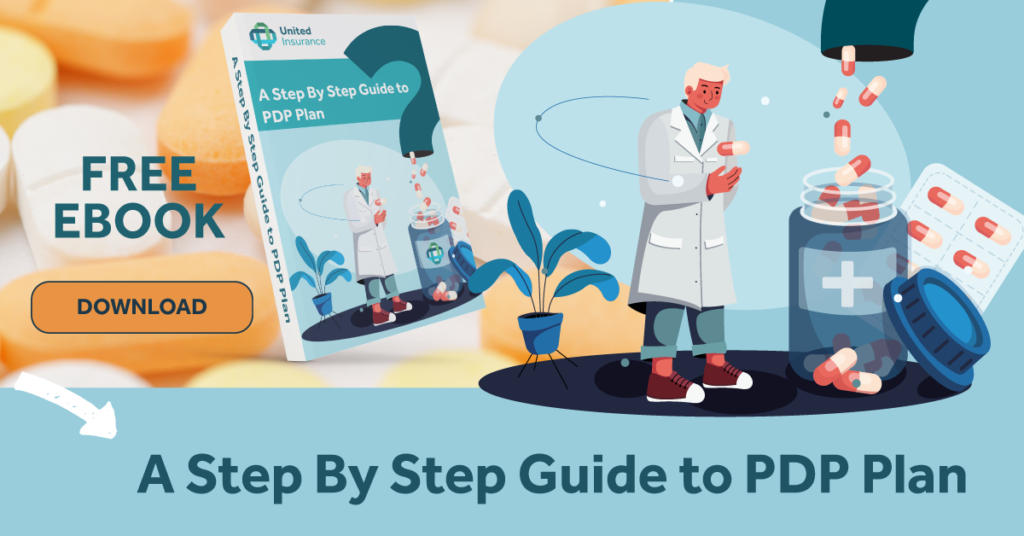
If you are on Medicare, then you know that part D coverage is a must. But how do you know which plan is right for you? There are many different plans available, and it can be difficult to figure out which one offers the best coverage. In this blog post, we will discuss how to compare medicare part D plans. As well as find the plan that is right for you.
What to Look For?
When comparing Medicare Prescription Drug Plans and Medicare Advantage plans. There are several factors to keep in mind while searching for a plan that fits your needs.
- Does the monthly premium provide a good value for your needs?
- Is the annual deductible amount something you are comfortable with?
- Does the plan cover all of your prescription drugs? What are the copayment and coinsurance costs for your prescription drugs?
- Do you want a stand-alone Medicare Prescription Drug Plan or a Medicare Advantage Prescription Drug Plan. Advantage plans include all of your Medicare coverage under one plan?
- What are the initial coverage and out-of-pocket limits?
- Are you at risk of entering the Medicare Part D coverage gap. (or “donut hole”), which is a temporary limit on what your Medicare plan will cover for prescription drugs? Read more about the coverage gap below.
- Does the Medicare plan include a pharmacy network? (Please note that pharmacy networks are subject to change; you’ll be notified by your Medicare plan if necessary.)

Comparing Plans by Costs and Benefits
Medicare Prescription Drug Plans and Medicare Advantage Prescription Drug plans are available through private insurance companies approved by Medicare. Because of this, however, the monthly premium amount is likely to vary by plan, insurance company, and location. Just as the monthly premium cost will fluctuate across insurance providers, the same is true of annual deductibles. It’s a good idea to shop around in order to be fully aware of your prescription drug coverage options.
When choosing a Medicare plan that includes prescription drug coverage, start by deciding whether to enroll in a Medicare Advantage Prescription Drug plan (which covers medical and hospital benefits, along with prescription drug coverage) or a stand-alone Medicare Prescription Drug Plan that works with Original Medicare. Always check with the plan to confirm that your specific prescriptions are covered. Make sure you understand what the cumulative out-of-pocket costs may be so that you can make an informed decision.
Keep in mind that just as costs can vary by plan, Medicare plans that include prescription drug coverage may also vary. This is when it comes to the specific prescription drugs they cover. An easy way to make sure that your current medications are covered is to check the plan’s formulary (list of covered medications) before enrolling in a Medicare plan that includes prescription drug coverage. Keep in mind that formularies are subject to change. Your Medicare Prescription Drug Plan or Medicare Advantage Prescription Drug plan will notify you if necessary.
Identifying The Donut Hole
One factor that could affect your out-of-pocket prescription drug costs is whether you’re at risk of entering the coverage gap (also known as the “donut hole”). This is a temporary limit on how much your Medicare Part D Prescription Drug Plan or Medicare Advantage Prescription Drug plan will pay for covered prescription drugs. While you’re in the coverage gap, you’ll pay a higher percentage of the cost for covered generic and brand-name prescription drugs.
Most Medicare plans that include prescription drug coverage have a coverage gap, but not every beneficiary will reach it. Whether you enter the coverage gap will depend on the type of prescription medications you take, how much they cost, your cost-sharing expenses, and how much your Medicare plan pays for covered medications. People who take more expensive medications or have higher copayments and coinsurance costs may be at greater risk of entering the “donut hole.”
You’ll enter the Medicare coverage gap after you and your Medicare Prescription Drug Plan or Medicare Advantage Prescription Drug plan have spent a certain amount on covered medications; this amount includes your deductible and is known as the Initial Coverage Limit.

Costs That Count Towards Reaching Your Initial Coverage Limit
- Your yearly plan deductible
- Your copayment and coinsurance costs for covered medications
The Initial Coverage Limit may change from year to year, so visit Medicare.gov for the most up-to-date amount. Once you and your Medicare Prescription Drug Plan or Medicare Advantage Prescription Drug plan spend this combined amount in prescription drug costs, you enter the Medicare Part D “donut hole.”
Once you’re in the coverage gap, you assume a higher out-of-pocket responsibility for your prescription costs. The good news is that healthcare reform provides government subsidies and manufacturer discounts to help lower what you pay for covered generic and brand-name medications in the coverage gap. Each year, people who enter the coverage gap will pay a smaller percentage of prescription drug costs until the Medicare “donut hole” which was finally closed in 2020, and there’s no longer a temporary increase in your prescription drug costs.
If you reach the coverage gap, you’ll automatically get catastrophic coverage once your out-of-pocket costs for covered medications have reached a certain limit. This amount may change from year to year; for the most up-to-date amount, visit Medicare.gov. Once you have reached this limit, you’re in the catastrophic coverage phase, and you’ll only pay a small copayment or coinsurance amount for covered medications for the rest of the year.
If you ever have a question regarding your prescription coverage. We should be the first number you dial. We hope you liked this blog.
